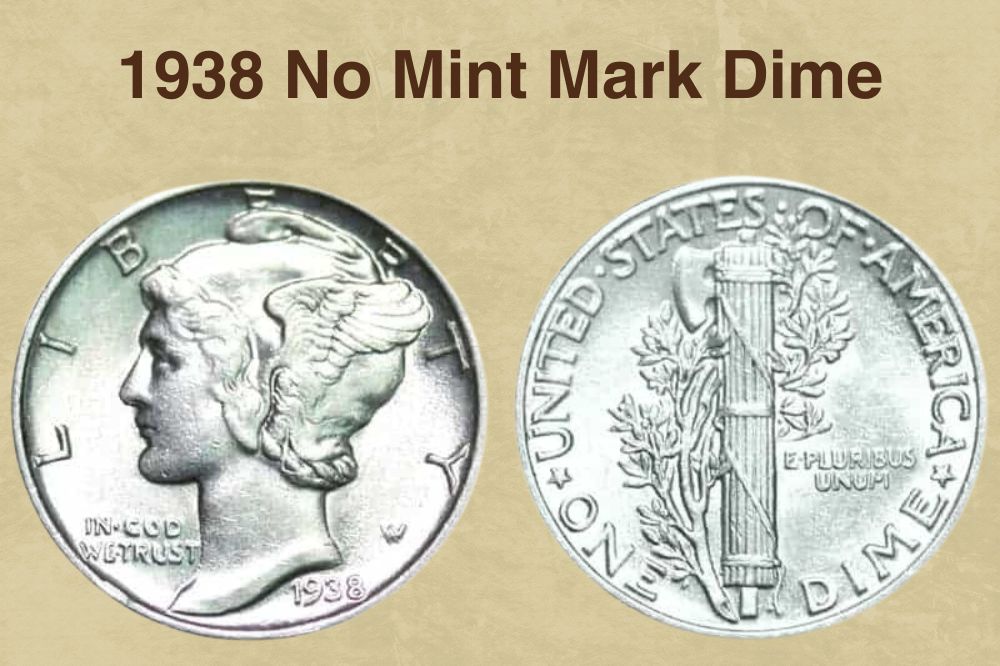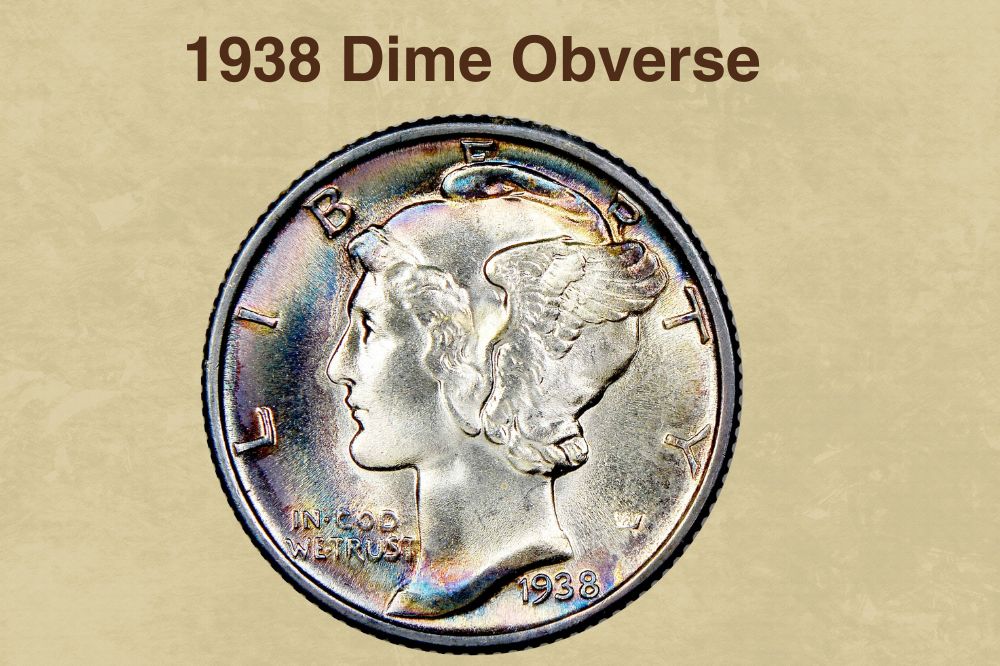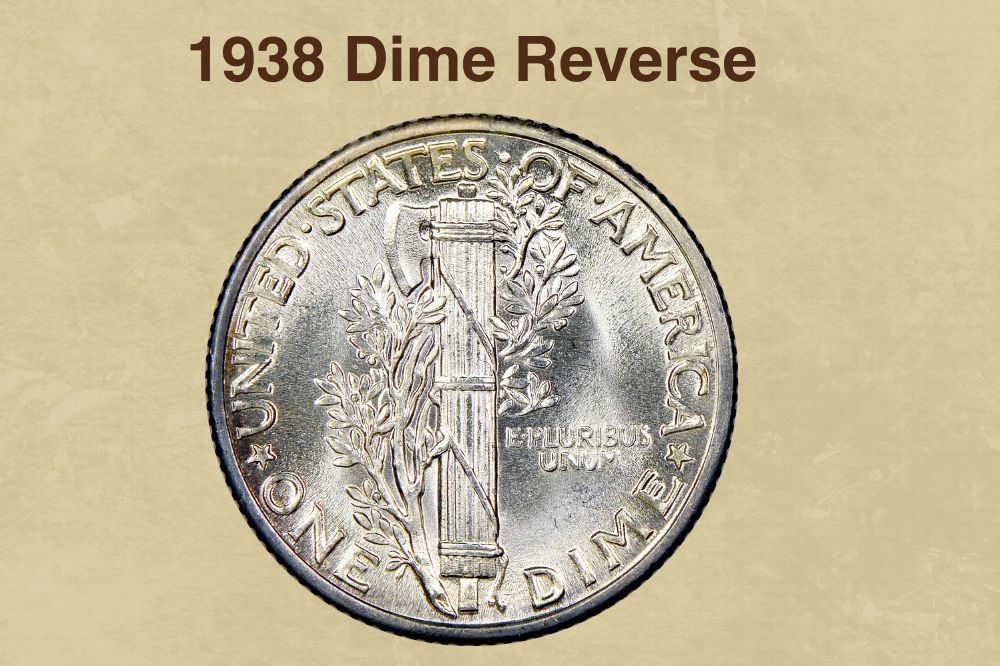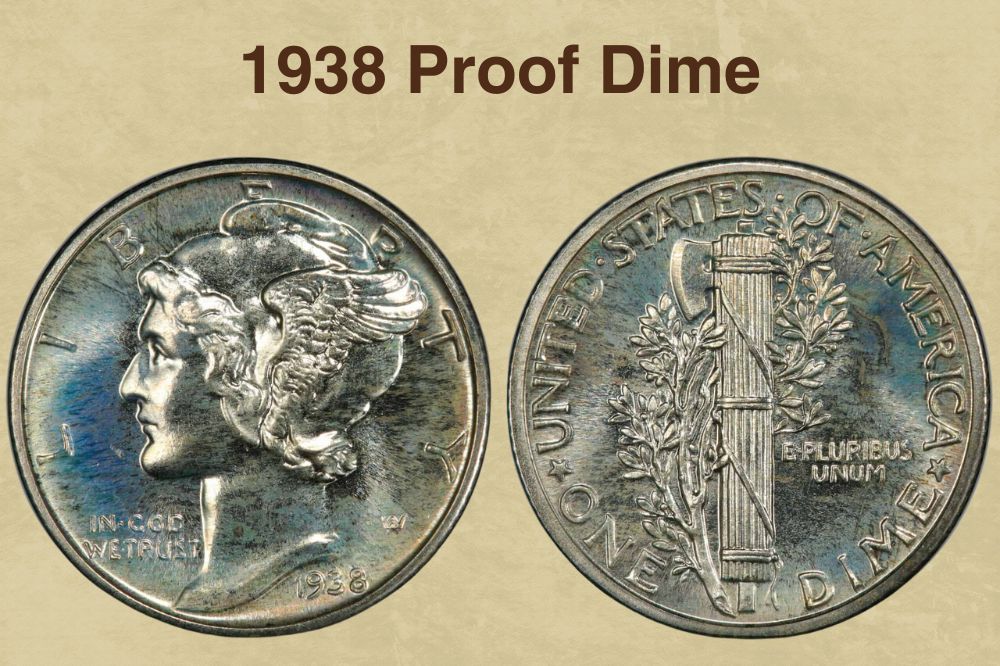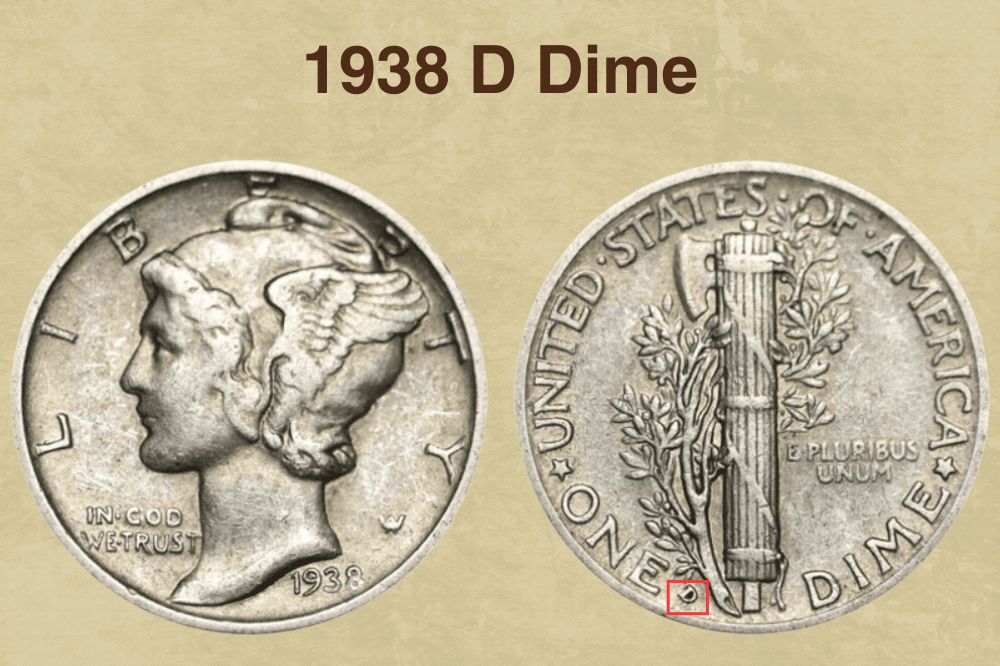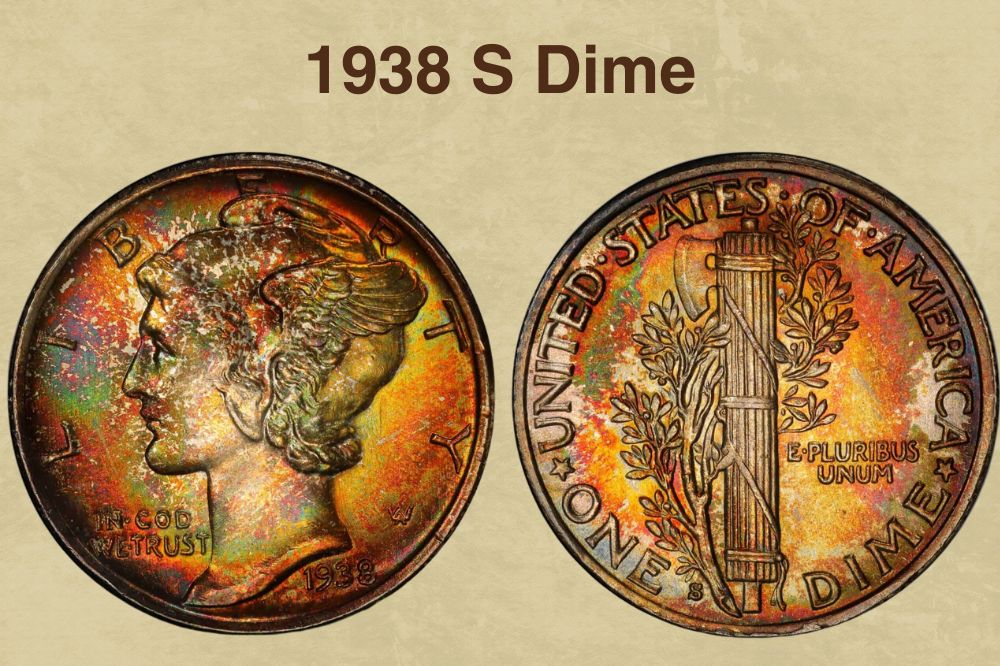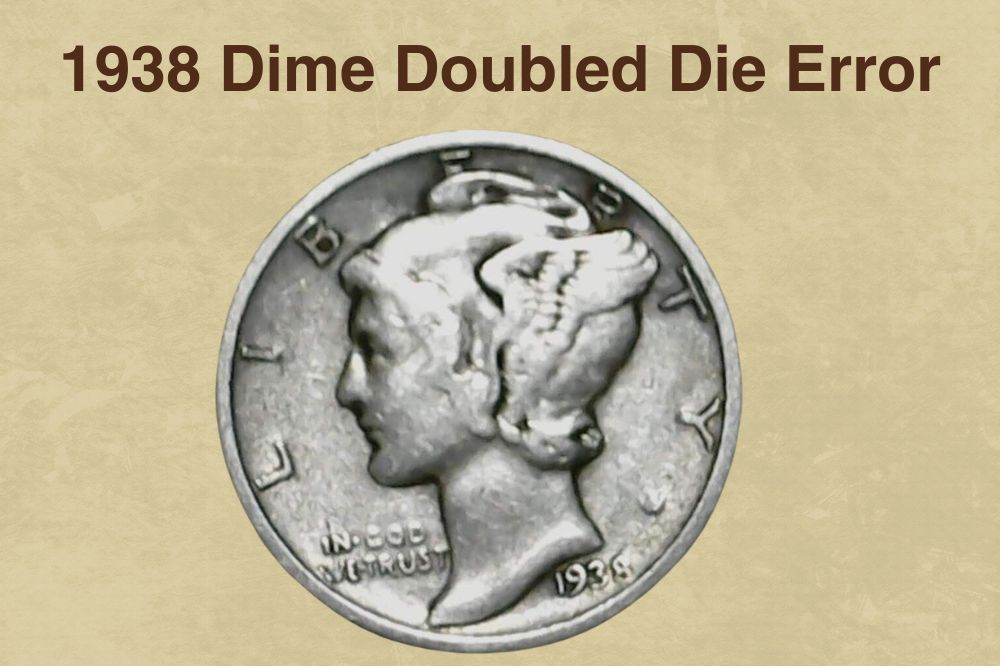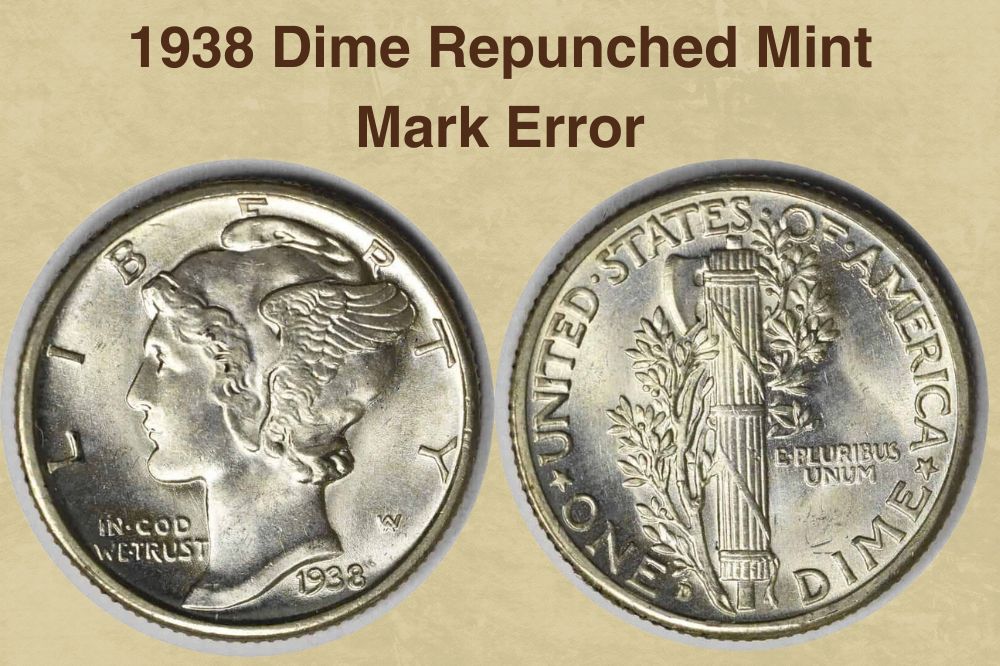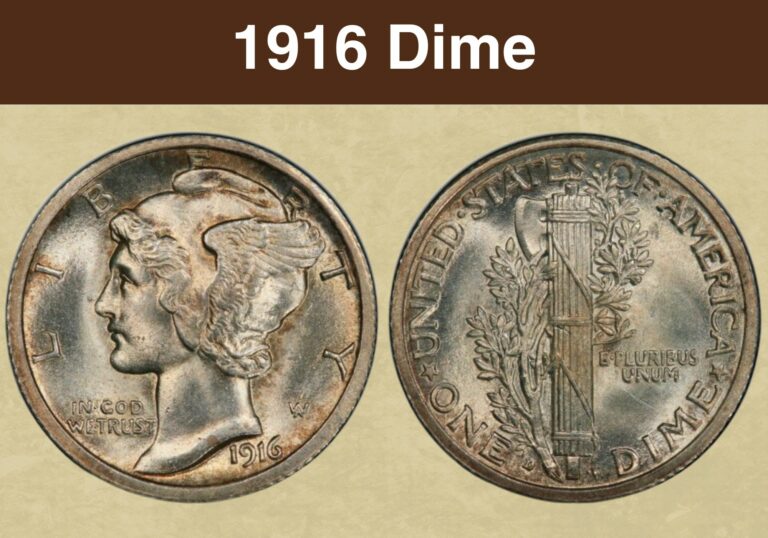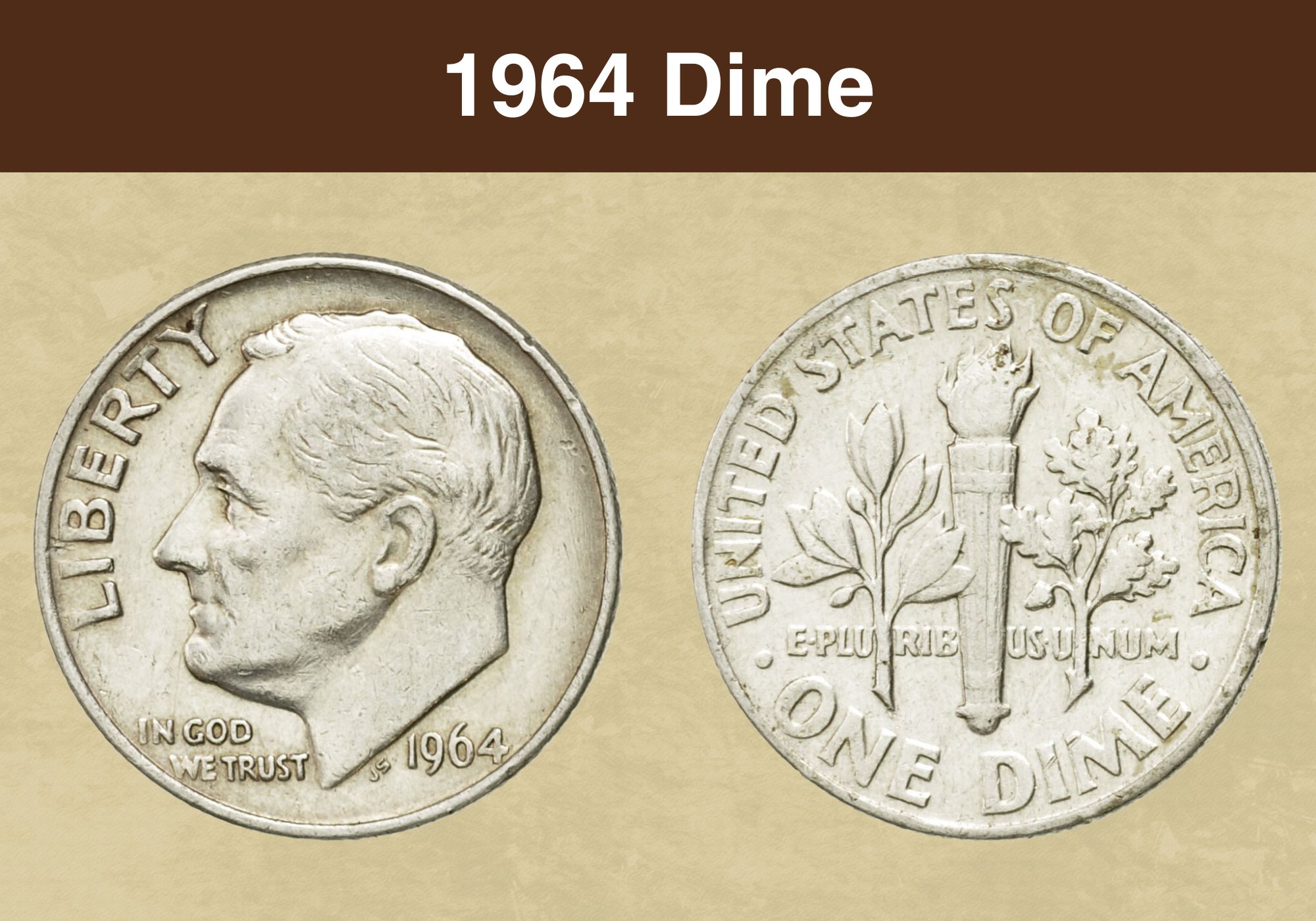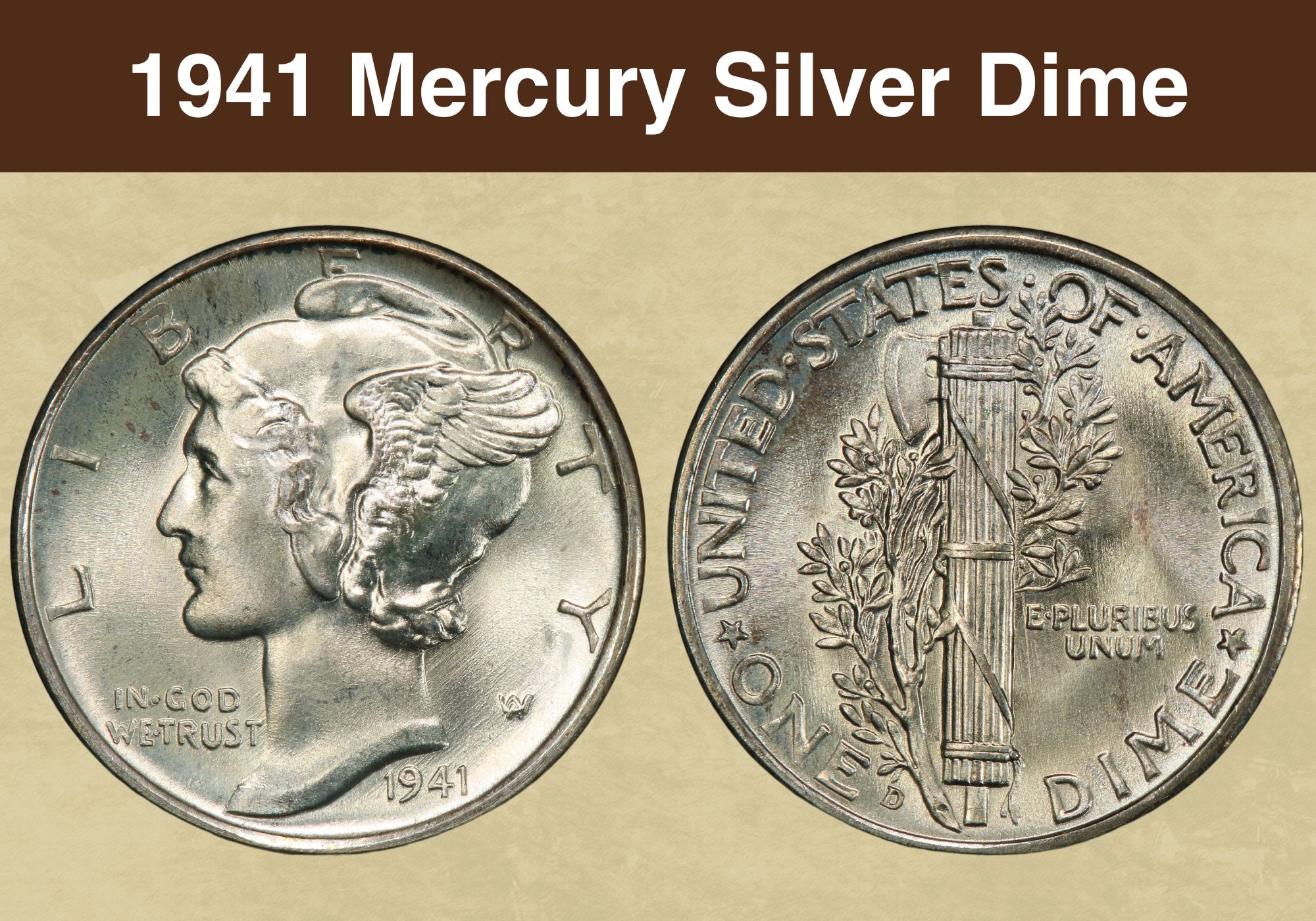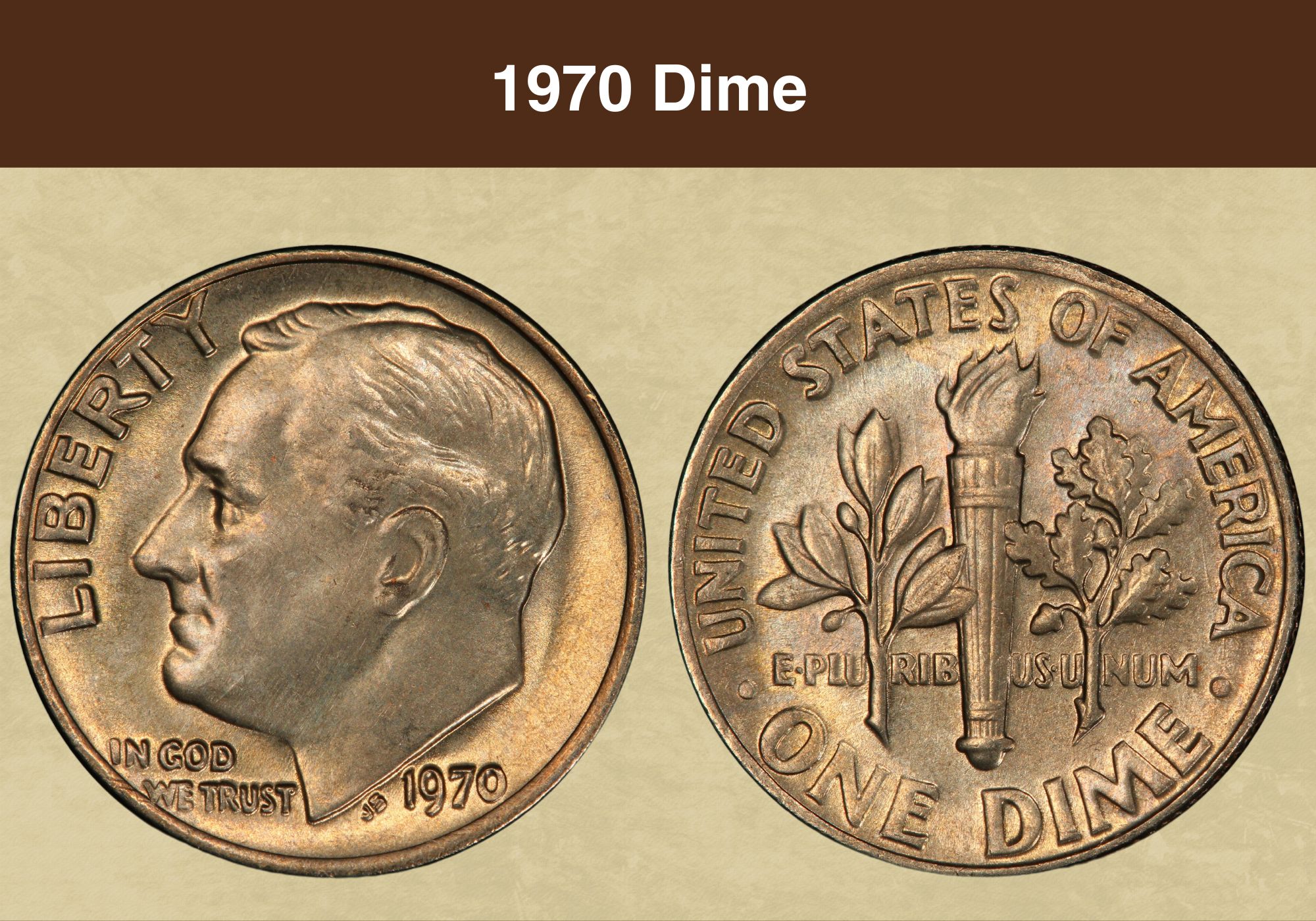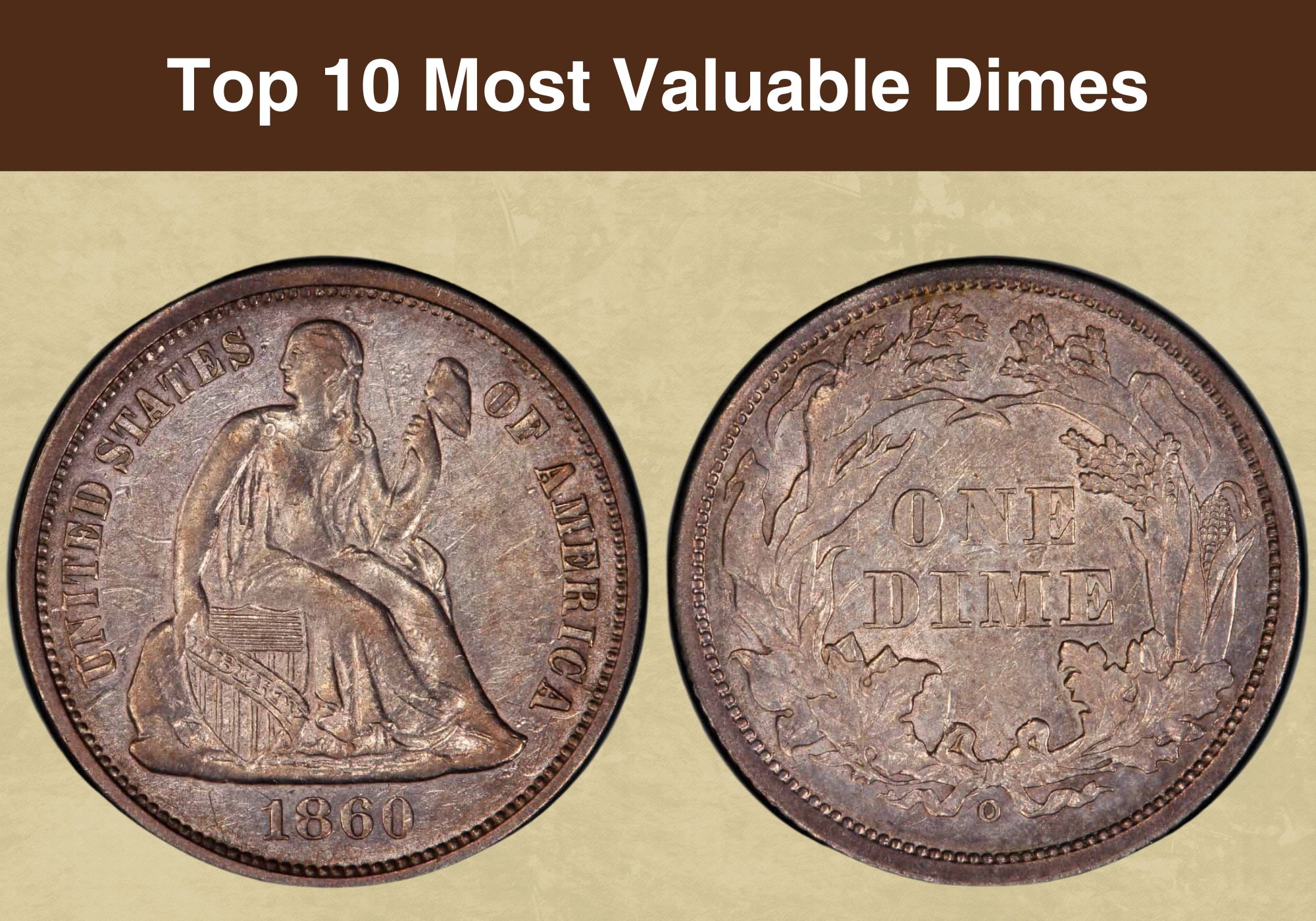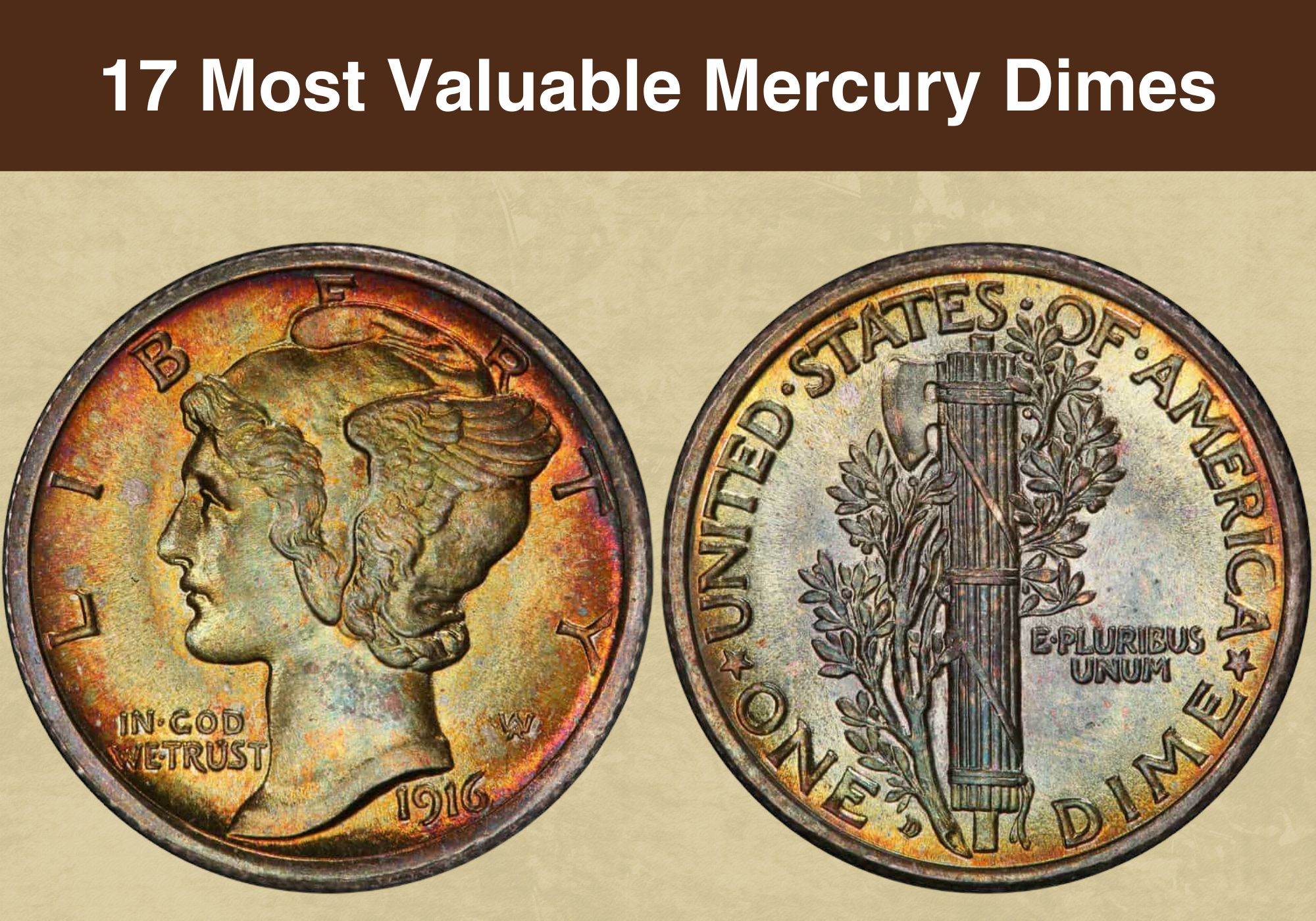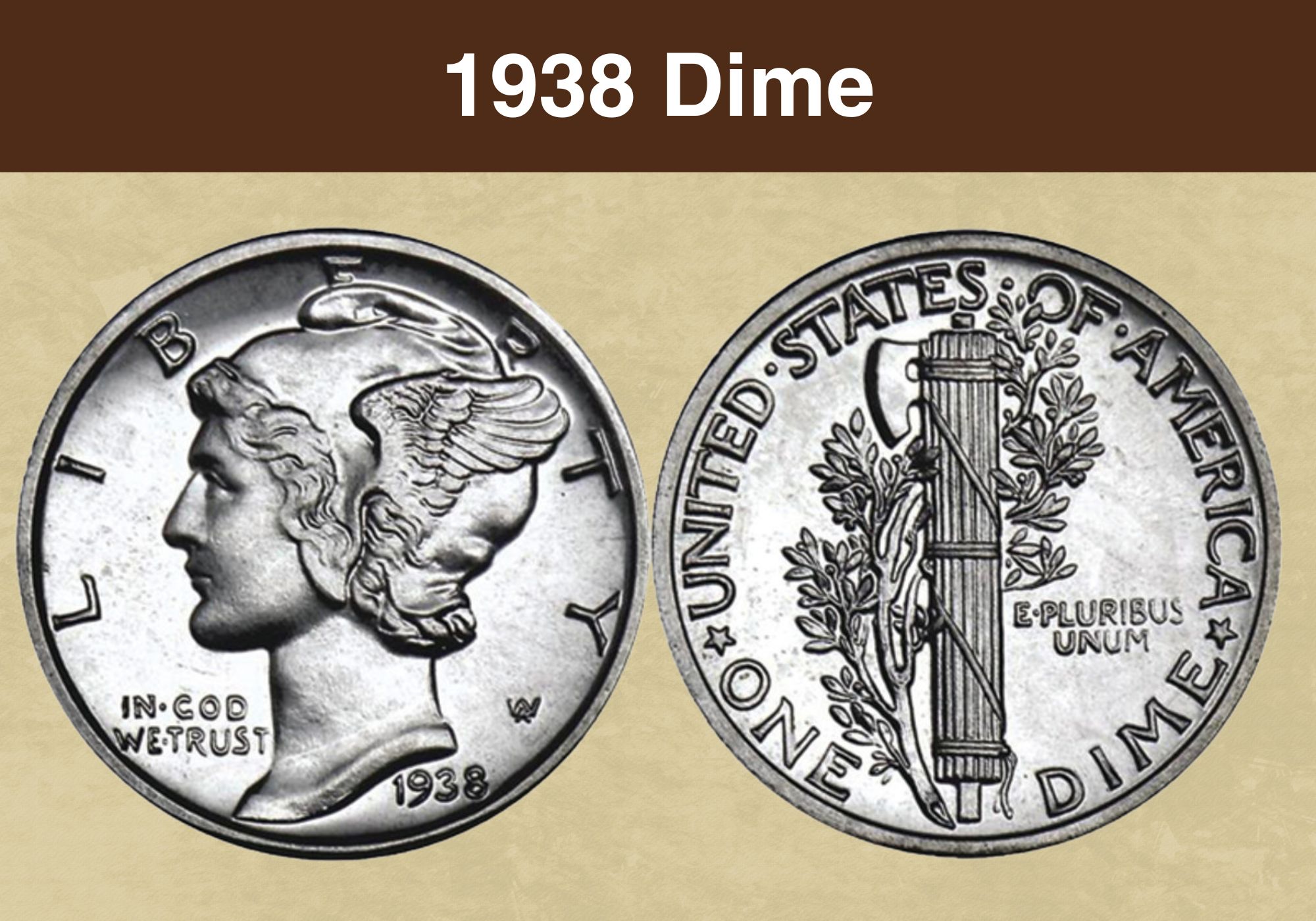
Coin Value Contents Table
Do you have a dime from 1938, and would like to know its value? Some old coins are highly sought after by collectors and can sometimes be worth several hundred or even thousands of dollars.
In this article, we look at the 1938 dime value. You will find information on what the different mint varieties are worth at different grades and how professional coin graders determine the value of 1938 dimes. In addition, we have included a brief history of the 1938 dime and a list of errors among the dimes from this mint year.
1938 Dime Value Chart |
|||||
| Mint Mark | Good G4 | Very Fine VF20 | About Uncirculated AU50 | Uncirculated MS60 | Uncirculated MS65 |
| 1938 No Mint Mark Dime Value | $2.97 | $4.30 | $7.27 | $12 | $36 |
| 1938 D Dime Value | $2.97 | $4.30 | $9.67 | $22 | $41 |
| 1938 S Dime Value | $2.97 | $4.05 | $12 | $24 | $50 |
The dimes from 1938 belong to a series of dimes known as the Mercury dimes, which were first coined in 1916 to replace the Barber dime. It was one of the new coins produced by the US Mint around that time in an effort to modernize the American coins.
Because the designs of the Chief Engraver Charles Barber had been used on several coins for many years, the Treasury Department decided it was time to invite new artists to submit ideas. From over fifty design submissions, the Treasury chose a design by Adolph Weinman featuring a portrait of Lady Liberty.
Weinman was also chosen to design the half dollar, which was being renewed around the same time. While the Treasury was happy with his designs, they drew a lot of objections from Charles Barber, who tried to get the designs changed claiming they would be difficult to mint.
Despite Barber’s objections, Weinman’s designs were used on both the dime and the half dollar. His Lady Liberty design was used on the dime until it was replaced with a portrait of Roosevelt in 1945.
Why Are the Half Dollars from 1937 Called Mercury Dimes?
People who are new to coin collecting sometimes wonder where the nickname Mercury dime comes from. The link to the Roman god, Mercury, comes from the winged cap on Lady Liberty’s head.
This cap, which is called the petasus, is associated with the ancient god Mercury who was often pictured wearing a similar cap. Mercury was said to be the messenger of the gods and the wings symbolized his speed.
Also read: Top 17 Most Valuable Roosevelt Dimes Worth Money
1938 Dime Grading
To provide more cohesive valuations, professional coin graders use an agreed scale to value coins. This scale is known as the Sheldon scale and runs from one to seventy.
The lowest grade given to a circulated coin is PO1, meaning the coin is in poor condition. These coins are usually of no value to collectors. The scale then progresses through different levels of good, fine, and about uncirculated coins, before moving onto uncirculated grades.
Coins that are given a grade between 60 and 70 are uncirculated coins and the number is preceded by the letters MS for the mint state. Among the dimes from 1938, the coins graded MS67 and above will command the highest valuations.
Full Band Grading
The most valuable 1938 dimes are those with full bands but how do you know if you have a full band coin? To check if you have a dime with full bands, look at the reverse of the coin. To qualify for a FB designation, the bands on the center of the fasces must be showing full separation.
You might sometimes see the full bands listed as an error variety. However, strictly speaking, it is not an error. Rather, it is to do with the strike quality when the coins were produced and means the coin was fully struck.
| # | Grade |
|---|---|
| 1 | Basal State-1 |
| 2 | Fair |
| 3 | Very Fair |
| 4, 5, 6 | Good |
| 7, 8, 10 | Very Good |
| 12, 15 | Fine |
| 20, 30 | Very Fine |
| 40 | Extremely Fine |
| 50 | About Uncirculated |
| 60 | Mint State |
| 65 | Mint State |
| 70 | Mint State |
Please check our grading guides to know your coin scale, It’s the necessary step to know the exact value of your coin.
Check out now: How to Grade Mercury Dime?
1938 No Mint Mark Dime Value
The Philadelphia Mint produced dimes without a mint mark in 1938. There were 22,198,728 coins released into circulation from Philadelphia, and this large quantity means the coins are still reasonably easy to find in the most circulated grades.
While there is no difference in the valuations between the three mint marks for coins that are in good or fine condition, about uncirculated no mint mark dimes are valued lower than the other two varieties. The difference becomes more noticeable among uncirculated dimes with the Philadelphia variety $10 to $12 cheaper than the others at MS60.
The auction record for an MS67 graded 1937 no mint mark dime is $1,150 from 2006. However, this was a regular coin. If a 1937 dime is designated as a full band (FB) coin, it can be worth considerably more, like the MS68+ no mint mark half dollar that sold for $14,375 in 2006.
The 1938 dimes are round coins with smooth edges. The coins weigh 2.5 grams and are 1.95 millimeters thick. They have a diameter of 17.9 millimeters. Dimes from 1938 were made with a composition of 90% silver and 10% copper.
The Obverse
The obverse refers to the side more commonly called heads. The 1938 dimes feature a portrait of Lady Liberty on the obverse. In the portrait, she wears a winged cap, and she is facing left.
Above Lady Liberty, you can see the word LIBERTY. Below her image, slightly to the right from the center, is the date the coin was minted. The motto IN GOD WE TRUST is in front of the image, and the designer’s initials are behind it.
The Reverse
On the reverse, the image features a bundle of wood tied together with three bands. The bundle is known as a fasces and has the blade of an axe protruding from the top of it. The fasces is symbolic of the country’s strength and unity, while the axe blade is symbolic of the power held by the federal government.
The words UNITED STATES OF AMERICA curve along the top half of the rim and the denomination of ONE DIME is below the fasces, also curving along the rim. The motto E PLURIBUS UNUM is on the right side of the fasces.
1938 Proof Dimes
In some years, such as in 1937, the US Mint also produced proof coins that are not produced for circulation. Instead, they are specially produced, higher-quality coins that are made for collectors to purchase. In 1937, the proof coins were minted in Philadelphia.
Because proof coins have not been in circulation and have often been kept in protective packaging, they are usually in a better condition than regular coins. A PR65 1938 proof is worth approximately $360.
1938 D Dime Value
In 1938, the Denver Mint produced the lowest number of dimes. However, with 5,537,000 dimes minted for circulation, they are not considered very rare and at lower grades are not hard to find.
Even at uncirculated grades, their values are quite modest compared to some other old American coins. A 1938 D dime graded as MS60 is valued at $25 and an MS65 dime will be worth approximately $60.
The auction records are $1,783 for a regular dime and $5,635 for a full band specimen. The regular dime was graded MS68 and sold in 2003, while the FB dime’s grade was MS68+ and it sold in 2006.
1938 S Dime Value
The San Francisco Mint produced 8,090,000 dimes for circulation in 1938 and, like the other mint varieties, they are not considered particularly rare. However, they are less common than the other two varieties at higher grades, which is reflected in the valuations.
At MS60, the 1938 S dime is worth $30, making it $2 more valuable than the Denver and $12 more than the Philadelphia variety. A 1938 S dime is worth $65 when graded as MS65.
Interestingly, the auction record for a regular strike dime is the lowest of the three mint varieties. In 2004, an MS68 graded San Francisco minted dime sold for just $776 at a Heritage Auctions sale.
However, the auction record for a full band dime from 1938 is significantly higher than the other mint varieties. In 2019, an MS68+FB dime was sold to a collector for an incredible $364,250.
Also read: Top 17 Most Valuable Mercury Dimes Worth Money
Rare 1938 Dime Error Lists
Other than the FB variety, 1938 dimes are not known for their rare errors. Below are some coin errors you might come across on the 1938 dimes.
Doubled Die Error
Occasionally, you might see a doubled image on a coin. This could be caused by a doubled die error when the coin die has been accidentally engraved with a doubled image. When the die is used to strike a plain planchet, the doubled image is transferred onto the coin.
Repunched Mint Mark Error
The US Mint used to punch the mint marks onto the coins by hand, which meant that mint mark errors were reasonably common. If the first mint mark was not in the right position, the member of staff would punch the mint mark again to correct the error. As a result, the coin will have two mint marks in slightly different positions.
Die Crack Error
When the die used to strike the blank planchets ages, it can begin to crack. When the cracks appear on the die, they are transferred onto the coin during the minting process. To check for die crack errors, look for a raised ridge or line on the coin’s surface.
Die Break Error
This is similar to the die crack error and is also more likely on dies that have been in use for a while. Sometimes, the coin die can break or chip. When the damaged die strikes the planchet, the finished coin may have parts of the design missing or there may be raised areas on the surface.
Also read: 13 Most Valuable Dime Errors Worth Money
Where to Sell Your 1938 Dime ?
Now that you know the value of your coins, do you know where to sell those coins online easily? Don’t worry, I’ve compiled a list of these sites, including their introduction, pros, and cons.
Check out now: Best Places To Sell Coins Online (Pros & Cons)
1938 Dime Frequently Asked Questions
Where to Find the Mint Mark?
To check if your 1938 dime was produced in Philadelphia, Denver, or San Francisco, you need to check for the mint mark. On the 1938 dime, the mint mark is on the reverse of the coin. Look for it just after the word ONE. There will be a capital D for coins minted in Denver and a capital S for San Francisco dimes. Philadelphia coins have no mint mark.
How much is a 1938 dime worth today?
How much a 1938 dime is worth today depends on many factors. Because there was a large quantity of 1938 dimes minted and released into circulation, most circulated dimes from that year are still quite easy to find and this is reflected in their prices.
A dime graded as good is worth around $2.80 in all three mint varieties and a dime in fine condition is worth about $4.13. When comparing the prices of 1938 mint varieties at the highest grades, Denver and San Francisco minted coins are more valuable than Philadelphia dimes, with dimes from San Francisco attracting the highest values.
While regular strike dimes are generally worth less than $2,000 even at the higher grades, dimes with full bands can sell for tens of thousands and in some cases even hundreds of thousands.
To check if you have a valuable full-band coin, look at the bands tying the bundle of wood together. If you see a clear separation of the bands in the center of the bundle, you could have a full-band coin.
Is a 1938 dime silver?
The 1938 dimes have a high silver content but they are not pure silver. In 1938, the US Mint used a metal composite that contained 90% silver and 10% of copper to produce the dime coins.

